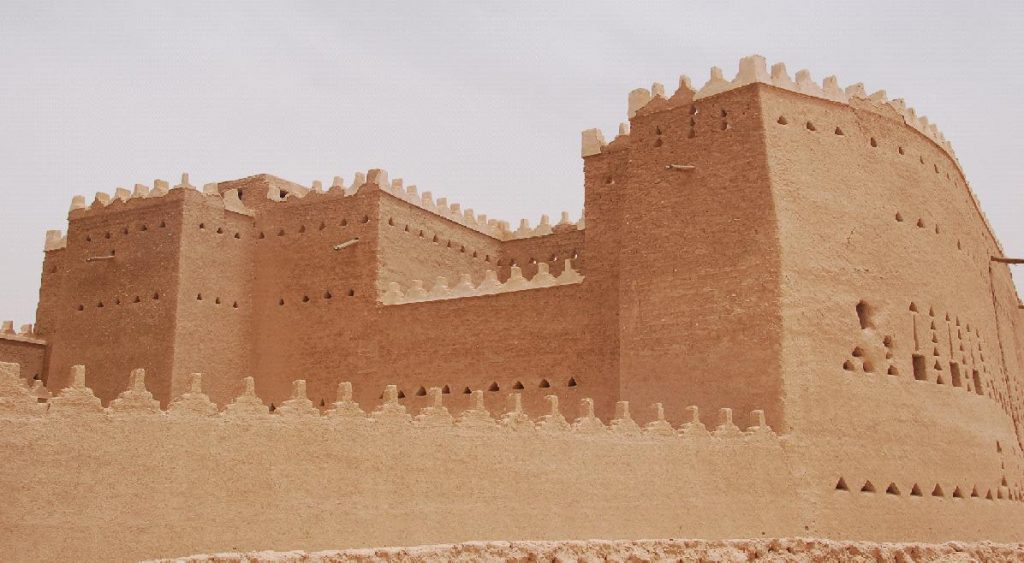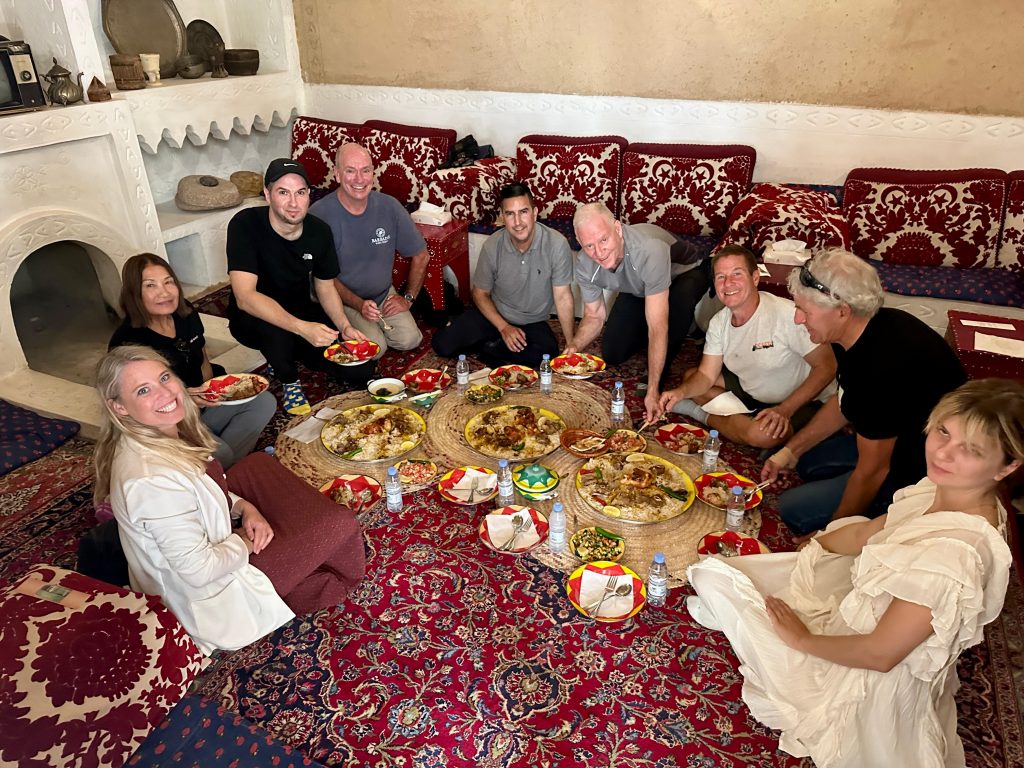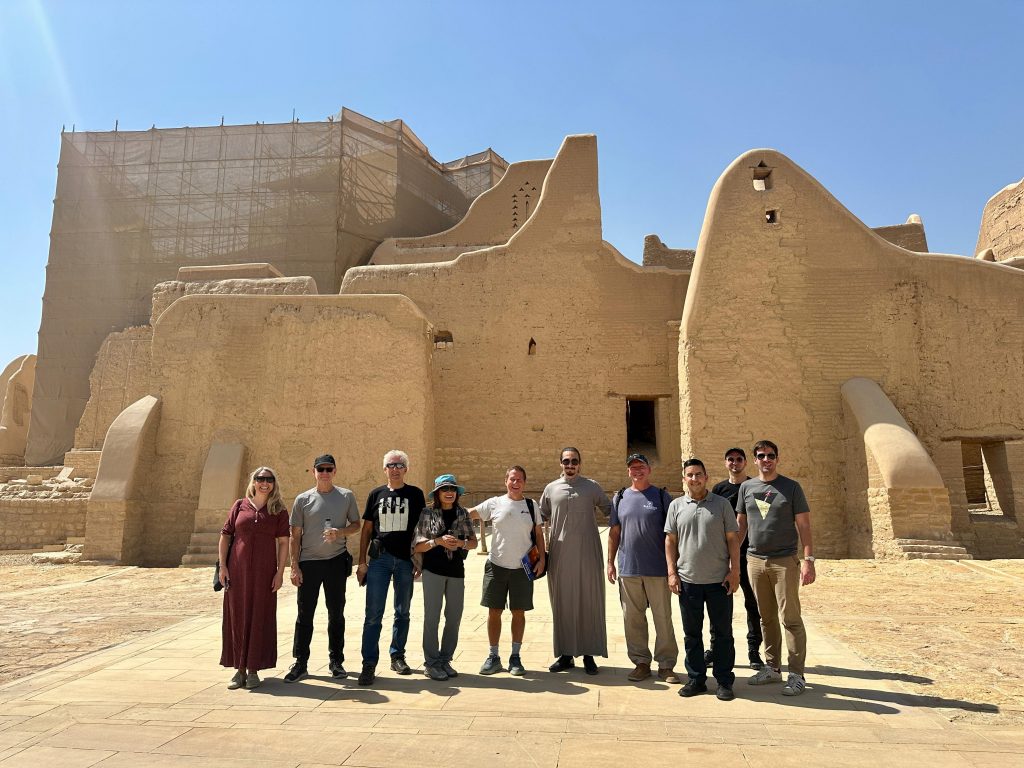According to most sources, modern Saudi Arabia was founded in 1932 by King Abdulaziz. After the collapse of the Ottoman Empire, he helped unified the various tribes, kingdoms, and city-states scattered across the Arabian peninsula.
However, like most good stories, the reality is more nuanced than this.
In fact, the first incarnation of the Saudi State, the Emirate of Diriyah, ruled over a larger area at its peak than the modern country. It was centred on Diriyah, a charming oasis town just outside of today’s capital, Riyadh.
The House of Al Saud – the namesake of the country and the family from which King Abdulaziz came – has ruled over parts of the modern state since 1727.
Our Saudi Arabia Autumn Tour recently made it to Diriyah, to experience this beautiful UNESCO World Heritage Site as the country transitions to a new age.
This is what it is like to visit the alluring, historical town of Diriyah, a brief history of it, and what it says about Saudi Arabia today.
What is it like to visit Diriyah?
After arriving in Riyadh, our first experience in the country was to visit the nearby Diriyah, the cradle of Saudi Arabia’s first state. It was founded 600 years ago along the lush Wadi Hanifah, a seasonal river that flows through the heart of the Kingdom.
As a UNESCO World Heritage site since 2010, Diriyah is known for its stunning preserved Najdi vernacular architecture. This is a type of traditional design that utilizes courtyards to create cool spaces in the desert.

At-Turaif – the historic district of Diriyah – most prominently features the mud-brick citadel where Imam Mohammed bin Saud established the first Saudi state in 1727. We were captivated by its historical significance, despite the partial destruction it suffered during the Ottoman invasion of 1818 under Ibrahim Pasha.
Inside the historic district, we explored landmarks including the At-Turaif Mosque, the Salwa Palace, and those traditional inner courtyards. The visit also took us through three fascinating galleries: the Diriyah Gallery, the Arabian Horse Gallery, and the Military Gallery. These provided a rich cultural and historical immersion and helped us to further understand the evolution of the Saudi state into what it is today.
In keeping with authentic Saudi culture, the group enjoyed a hearty lunch at a traditional restaurant, Najd Village. Here, they aim to recreate the food and Najid architecture once ubiquitous in Diriyah.

Two highlights of our feast included Jareesh (crushed whole wheat cooked in milk, garnished with onion and lime) and Kabsah (lamb, chicken, and camel meat with rice).
What does Diriyah say about Saudi Arabia today?
“My Kingdom will survive only insofar as it remains a country difficult to access, where the foreigner will have no other aim, with his task fulfilled, but to get out.”
– King Abdulaziz, 1930.
To say that Saudi Arabia has come out from isolation in the last decade would be a massive understatement.
While the Kingdom has long ranked highly in the list of “most visited countries in the world,” this is due to it being home to Islam’s holiest site, Makkah. As such, Saudi has accepted an average of 2 million pilgrims a year for the annual Hajj, one of the compulsory “Five Pillars” required of Muslims.
However, if you were not a pilgrim or businessman, you were out of luck. Such was the want to keep the average traveller out that tourist visas didn’t even exist in the Kingdom until 2019.
But in an attempt to diversify their economy from oil – and likely also due to the more “liberal” policies of Crown Prince Mohammed bin Salman – the Saudi authorities have gone all-out to grow tourism in their country.
You have likely noticed this yourself without trying. Recently, it has been difficult to watch a YouTube video or ride on a London bus without encountering Saudi’s ubiquitous “Welcome to Arabia” ad campaign.

Indeed, this irony is not lost on many people, especially in Diriyah.
The town, the birthplace of a ruling family known for its preference for isolation, has now become the epicentre of Saudi Arabia’s tourism industry.
Why you should visit now, and how to do so:
Saudi Arabia is changing quickly, more so than other countries in the world. Therefore, we recommend visiting sooner rather than later, before the tourists get here and turn the Kingdom into the next Dubai.
Of course, the best way to make the most of this fascinating country as it opens up is to visit with YPT.
Luckily, our next tour to Saudi is planned for next February, and we still have some spots available! Alternatively, why don’t you join our pioneering Gulf Trek tour, which visits all six Gulf countries, including Saudi.
If these dates don’t work, we can also plan a private tour to suit your interests, needs, and time scale. Just drop us a line here!





